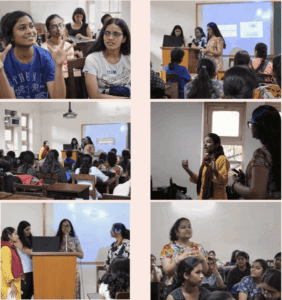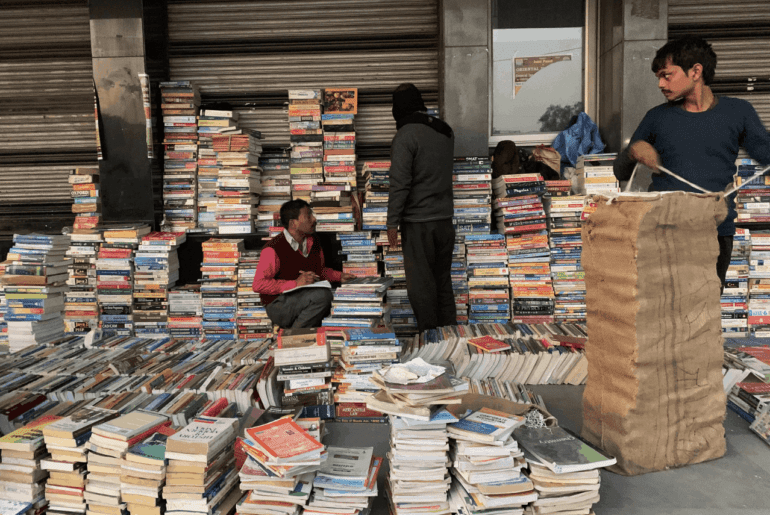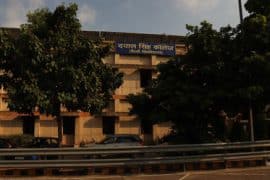On a typical Sunday in Daryaganj, one would fine streets hustling with book vendors, buyers negotiating the best cheapest price for their favourite books and the busy street packed with students from all walks of life. One order and a few officials were enough to make the place dead being almost impossible to recognize now.
The Delhi traffic police submitted a report to the High Court stating the NS Marg was a very busy road with high traffic volume at all times, and that booksellers occupied the footpath, leaving no space for pedestrians. On July 3 the high court issued an order to the North Delhi Municipal Corporation to ensure that weekly bazaars on Sundays were not permitted on Netaji Subhash Marg in Daryaganj.
This 50-year-old bazaar was brought down leaving the vendors unemployed for a period and a disheartening the avid book lovers especially in Delhi University. From Manga Comics to NCERTs it was the cheapest hot spot for a wide variety of books for students from the University. Moreover, it was a space where students could actually come out from their graduation textbooks and expand their horizons and just fall in love with books. While reading books becoming a rare activity in this fast-paced world, the 50-year-old ‘jungle’ kept the circle of book lovers alive with its trails of books. It had a cultural influence to make the place known for it and attracted thousands of people. It was about providing a safe space to cherish books and education and an escape from the tiresome world into the world of books. Jaishree Kumar, a final year student from Ramjas college reacted to the move saying
“Daryaganj was Delhi’s treasure chest of second hand affordable books. It was a place where students and readers of all ages could find what interests them. I’ve been there only once; I wish I visited it more frequently to relish its glory. I wonder how this shutdown will affect the small business owners who relied on selling these books.”

Image Credits : Mayank Austen Soofi
Mayank Austen Soofi is popularly known as the “the delhi walla” wrote about the history of the place. He mentioned that, fifty years ago, a kabadi bazaar selling used clothes, sandals and furniture was held each Sunday near Jama Masjid in the Walled City. The shops lined both sides of what was once Delhi’s biggest fish market. In 1964, three men gate-crashed into the bazaar, set up stalls next to the Victoria Zenana Hospital (later renamed after Mahatma Gandhi’s wife, Kasturba) and started selling second-hand books. After five years, the kabadi bazaar was moved to what is called “Red Fort’s backside”. The ‘backside’ was not easily accessible by public transport; neither was there water or shade available for respite during sweltering summer afternoons. Within six months, Kuldeep Raj Nanda, one of the three original booksellers of Jama Masjid’s kabadi bazaar, left the place. He set up a Sunday stall just below the Lohe Walla Pul, the pedestrian over-bridge made of iron that was dismantled some years ago and became the first bookseller of Daryaganj’s weekly book bazaar. Thus, started this weekly affair of readers and books.
The evacuation has disturbed the student community and student collectives from DU are taking initiatives for its relocation and revival. The Books and Documentary Review Club of Economics department at LSR held a group discussion in the college to discuss the status-quo of Daryaganj book market. They helped mobilise people for the protest held on the previous Sunday by the Delhi Book Archive to advocate against the move and relocate the bazaar. They commented “The Daryaganj Bazaar issue has been very close to us. It’s time to give our love back to the books that like mosaic spread out on the pavements of Daryaganj and to the hundreds of men and women who made their lives on the pages of books that they sold.
Let’s not allow the forcible deconstruction of our spaces.”

Image Credits: bdrecon_lsr
While the decision of the court has been taken keeping in mind the traffic congestion issues, shutting down a place cannot be the solution to it. The cultural hubs and relationships one has formed over years with the place should not be washed away into dead streets with honking drivers. Such spaces have always been the identity of the place and hub for several students in the University. A collective voice should stand for its revival and keeping its identity alive.
Feature image credits: Mayank Austen Soofi
Sriya Rane





Comments are closed.